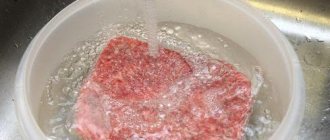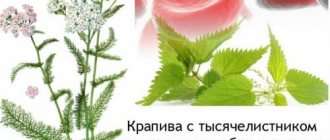With the onset of January, in many cities of Russia and Ukraine, the thermometers began to drop sharply, and residents of a number of settlements literally buried themselves in the snow, without meaning to.
On weekends and holidays, no one is going to sit at home and go for a walk. Here are the 5 main myths about ways to stay warm in winter and 5 really effective ones on how to avoid freezing if you walk outdoors for a long time or, worse, are forced to stay outside for a long time for reasons beyond your control.
Feet are constantly cold: folk recipes
1. Warming cream. Mix two of the following possible ingredients: red pepper extract, cocoa butter, camphor, rosemary and sesame. Add My feet are constantly cold: what should I do with baby cream or Vaseline? Apply warming cream to washed and dried feet.
2. Warming tincture. Take 2 tsp. ground red pepper and add a glass of vodka. Leave for 10 days, strain. Lubricate your feet with the tincture before going to bed. However, compositions with red pepper should be used with caution, as it can lead to allergic reactions and irritation.
If your feet are already frozen: - take a warm bath, increasing the temperature, starting from 20-25 degrees and up to 40-42 degrees.
— apply an alcohol compress to the area of the feet. You can also make an unusual compress by soaking the soles of thin socks in alcohol or vodka and putting them on your feet, heated in hot water, and putting warm woolen socks on top.
- Massage your entire feet and legs, massaging with your hands, a massage roller or a dry brush. When massaging, make movements from bottom to top.
- warm yourself up from the inside by drinking hot milk, a cup of hot tea with honey and lemon, a drink with ginger or cinnamon.
— make a warming herbal tea that will improve blood circulation. Take 1 tsp. sage, chamomile, mint, valerian root, bay leaf, 2 cloves, a piece of ginger, a pinch of coriander, a little ground pepper and pour a liter of boiling water in a thermos. Leave for an hour and drink like tea.
My feet are cold. How to deal with it
The smaller mass of muscle tissue in women, compared to men, does not allow them to produce the required amount of heat.
Even with a slight change in air temperature, blood from the skin rushes to the internal organs to maintain reproductive function. First, the toes and hands get cold, then the feet and hands; it is not uncommon for women to feel cold extremities - this is the norm. Men react less sensitively to temperature changes and sometimes don’t even notice them. But constantly freezing feet and hands indicate disturbances in the functioning of the circulatory system. Often, such disorders can be eliminated with proper nutrition, light self-massage, physical exercise and yoga. Cold feet can also be caused by diseases: diabetes, hormonal disorders, thyroid gland. Therefore, if you often feel cold, you should consult a doctor. Low or high blood pressure can also cause cold hands and feet. In a healthy person, blood pressure should be within normal limits at rest and increase during exercise. It is worth noting that women are more likely than men to have low blood pressure, as scientists note: 59% versus 43%. Often in women, low blood pressure causes fainting; the brain does not receive enough oxygen contained in the blood. But lower blood pressure also has its advantages: generally, the absence of heart disease and a longer life expectancy. Hypertension or high blood pressure occurs due to the “obstruction” of blood vessels, the passages are greatly narrowed and the blood puts more pressure on the walls of the vessels.
One of the causes of hypertension is cholesterol. This disease is difficult to treat, but you can prevent its occurrence by changing your lifestyle. It’s worth starting with nutrition: fatty acids contained in fish reduce cholesterol; fruits and vegetables - supply the body with antioxidants that prevent blockage of blood vessels. The combination of coffee and cigarettes is very dangerous for hypertension; caffeine and nicotine strongly constrict blood vessels. But alcohol, on the contrary, dilates blood vessels; a glass of good red wine will not hurt.
• Dehydration can also lead to unpleasant changes and affect blood pressure, so you need to drink at least one and a half liters of water a day. In summer - juices, and in winter - green tea. What to do? Cold, stress and overwork are the first things to deal with. Try to dress according to the weather so that you are warm but light. Cold or excessive heat will disrupt the body's thermoregulation. Valerian root, motherwort, mint and lemon balm - decoctions of these herbs will help relieve stress. Give your body time to recover, sleep and rest more, at least 8-9 hours a day. Your daily diet should include foods containing vitamins and minerals that strengthen and support the vascular system.
- Vitamin C (ascorbic acid) - found in lemons, kiwi, rose hips, oranges, black currants. It regulates blood clotting, tissue repair and synthesizes collagen.
- Vitamin P (bioflavonoids) – found in large quantities in nuts and pumpkin seeds. Taken together with vitamin C, it prevents the oxidation of the latter; together they effectively strengthen the walls of capillaries. Another benefit of vitamin P is the reduction of bruising.
- Vitamin PP (nicotinic acid) – bread, eggs, liver, beef and cereals are rich in it. Vitamin PP regulates protein metabolism and nervous activity.
• Chili pepper or hot red pepper – great for stimulating blood flow.
• Sprouted wheat grains, seeds, nuts and whole grain bread are rich in vitamin E, which strengthens the walls of blood vessels. • Garlic can be consumed in any form. It lowers cholesterol levels and prevents blood clots.
• Ginger can normalize blood circulation. Add it to tea, when preparing soups, stews or fish. Don’t forget about physical activity; if your feet often get cold, walk more. Try to spend at least 30 minutes doing yoga or fitness every day.
How to warm up: include “hot” foods and drinks in your menu
Food is energy, most of which is used to heat the body. Therefore, eat well during the cold season. Include in your diet
those foods that warm you up.
This:
. meat; . fish; . potato; . cheese; . onion; . horseradish; . dried apricots; . bananas.
Also warms you up instantly
spices such as ginger, pepper, cinnamon, garlic, cumin, curry.
A good drink to drink is tea
. And not the usual hot one, but with spices: ginger, lemon, cinnamon, cloves and other ingredients.
Recipe for ginger tea with apple and lime: pour 0.5 water into a saucepan, then add peeled and finely chopped ginger root, a pinch of cinnamon, and cloves. Bring to a boil and cook for 10 minutes. Add the squeezed juice of ½ lemon and its pulp. Cook for another 5 minutes. Strain the hot broth into the brewed green tea and pour into cups. Top with green apple and lime slices.
Of course, these are not all life hacks that help you stay warm
in an apartment or house. Europeans also cover themselves with blankets laid out on the sofas, hang thick curtains on the windows, and also install a small panel covered with foil between the wall and the radiator, which reflects the heat back into the room.
They also hug with family and friends. So why don’t you take their advice and stop chattering your teeth from the cold?
Moreover, these life hacks are available to everyone, and they do not significantly affect electricity bills.
You may be interested in: Perfect belly in 5 minutes a day.
Contents of the article: Some people adore winter, while others, as it approaches, are thinking about how to keep warm in the cold and not freeze. In order not to freeze outside in winter, you should first of all dress in accordance with the duration of your stay outdoors and the expected activity. Today we will talk about how to stay warm in the cold.









